Legacy phone lines are quickly becoming a financial and operational burden. A single PRI channel often costs between $40 and $50 per month, while SIP channels typically range from $15 to $25 (source: TechTarget, Gartner). That difference may not look dramatic for one channel, but for a mid-size company running hundreds of concurrent calls, the gap represents thousands of dollars in recurring savings every month.
The financial argument is only part of the story. Carriers worldwide are shutting down legacy ISDN and PRI services. In Germany, Deutsche Telekom completed its ISDN phase-out in 2022; the UK is targeting a full ISDN shutdown by 2025, and U.S. operators are quietly decommissioning PRI circuits across several states (source: Ofcom, FCC). Businesses that rely on these lines face rising costs, long provisioning cycles, and rigid capacity limits that can no longer keep up with modern communication demands.
SIP trunking offers an exit strategy, and a foundation for the future. Unlike fixed-capacity PRI circuits, SIP trunks scale up or down instantly, support advanced features like Microsoft Teams integration, and provision new numbers in minutes instead of weeks. The shift isn’t just about saving money, it’s about creating a communication system that grows with the business instead of holding it back.
The following roadmap walks through every step of a successful migration, from assessing your current infrastructure to selecting the right provider and avoiding common pitfalls.
Key Takeaways
- Legacy ISDN/PRI lines cost 40–60% more than SIP trunks and are being phased out globally, making SIP migration urgent for cost and continuity.
- A successful SIP migration starts with infrastructure audits, network readiness testing, and regulatory planning, especially for compliance-heavy industries.
- Choose SIP partners with 99.99% uptime, global reach, fraud protection, and seamless PBX/UCaaS integration to ensure long-term scalability and resilience.
- A phased rollout, pilot, parallel run, full cutover, combined with SBC configuration, QoS policies, and real-time monitoring ensures a smooth transition.
- DiDlogic helps businesses future-proof communications with global SIP coverage, number portability, real-time provisioning, and advanced routing features.
Why Businesses Are Abandoning ISDN/PRI for SIP
Cost has become the most obvious pressure point. A single PRI channel often falls between $40 and $50 monthly, while SIP trunks typically cost $15–$25 per channel (source: TechTarget, Gartner). For organizations running dozens of concurrent calls, SIP cuts recurring telecom bills by 40–60%.
Global policy shifts are forcing the issue. Germany finished its ISDN shutdown in 2022, the UK will phase out ISDN by 2025, and U.S. carriers are gradually retiring PRI lines under FCC oversight. Businesses that continue to depend on legacy circuits face rising costs, shrinking vendor support, and the looming risk of service termination.
Beyond financial strain, ISDN and PRI limit growth. Expanding capacity requires installing additional circuits, a process that can take weeks. Provisioning new numbers is slow, while maintenance depends on legacy hardware that fewer technicians are trained to support.
SIP trunking eliminates those barriers. Channels scale elastically to match call volumes, provisioning happens in minutes, and advanced features—such as direct integration with Microsoft Teams or Zoom Phone—create a unified communications layer that legacy lines can’t deliver. For businesses with remote teams, global offices, or seasonal spikes, the agility of SIP has become the deciding factor.
Pre-Migration Assessment – Building the Business Case
Audit of Current Systems
A structured inventory is the first step. List existing PBX hardware and software, noting whether systems are cloud-ready or locked into on-premises infrastructure. Include compatibility checks for handsets and softphones—brands like Cisco, Avaya, and Microsoft Teams Direct Routing often require specific firmware or licensing. This exercise clarifies whether the migration will involve a direct SIP integration, a gateway, or a shift to a hosted UCaaS platform.
Network & Bandwidth Readiness
Voice traffic demands predictable network performance. Plan bandwidth using codec requirements:
- G.711 codec requires ~100 Kbps per call.
- G.729 codec compresses usage to ~32 Kbps per call.
Run a VoIP stress test before cutover. Measure packet loss (<1%), jitter (<30ms), and latency (<150ms). Any deviation indicates the need for QoS rules, upgraded routers, or dedicated circuits to protect call quality during high traffic.
Compliance & Risk Management
Regulatory obligations vary by industry. Healthcare providers must secure voice traffic under HIPAA, while payment processors must meet PCI-DSS standards. Emergency calling adds another layer: 911/E911 compliance in North America requires precise location routing that differs from country to country.
Security planning should include:
- Session Border Controllers (SBCs) to shield the network edge.
- TLS/SRTP encryption for signaling and media streams.
- Fraud detection tools to block toll fraud, call hijacking, and robocall patterns.
Pre-migration risk mapping ensures the transition strengthens compliance instead of creating exposure.
Selecting the Right SIP Trunking Partner
Key Provider Benchmarks
Reliability sits at the top of every evaluation. Look for service level agreements guaranteeing 99.99% uptime or higher. Anything less risks frequent outages.
Geographic reach matters as well. Global providers offer seamless coverage across continents, while regional vendors may deliver better latency in specific markets. Coverage maps highlight whether a provider can support both local offices and international branches without routing delays.
Pricing transparency is another differentiator. Some providers charge per channel, while others use a usage-based model. Per-channel pricing works for predictable call volumes, whereas usage-based billing can favor seasonal businesses that see dramatic fluctuations.
System Integration Factors
Decide whether to keep an on-premises PBX or move to a hosted UCaaS solution. A PBX offers control and sunk-cost protection but requires ongoing maintenance. Cloud-native UCaaS systems deliver faster feature adoption and simplify scaling, though they may require retraining staff.
Integration with existing business platforms adds long-term value. Connecting SIP trunks to Salesforce, Zendesk, or similar tools enables features like screen pops, automated call logging, and unified customer histories—benefits PRI systems never supported.
Security & Support Guarantees
Round-the-clock support is non-negotiable. A serious provider runs a 24/7 network operations center (NOC) with documented ticket response SLAs, not just a helpdesk email.
Fraud protection should extend beyond basic monitoring. Effective measures include toll fraud detection, robocall blocking, and automated alerts when call volumes spike unexpectedly. Without these safeguards, businesses face both financial and reputational risk.
Step-by-Step SIP Trunking Migration
Pilot Phase
Start small. Assign 5–10% of users or departments to a pilot. This creates space to identify integration challenges before scaling. Track specific KPIs:
- MOS (Mean Opinion Score) to capture user experience.
- Dropped call percentage to detect network instability.
- Latency to ensure calls stay responsive.
Feedback from this phase shapes the wider rollout strategy.
Parallel Run
Run SIP trunks alongside PRI lines for 30–60 days. This dual setup allows teams to validate call flows without risking downtime. If SIP issues arise, calls continue on PRI while engineers troubleshoot. Document an escalation plan—who responds, how fast, and what rollback procedures look like—before the parallel phase begins.
Full Cutover & Stabilization
Before full migration, complete a checklist:
- Verify number porting for every DID.
- Apply QoS policies to prioritize voice traffic.
- Test failover routes across multiple carriers.
After cutover, maintain visibility with real-time dashboards tracking jitter, latency, and uptime. Monitoring ensures stability during the first weeks, when minor configuration gaps are most likely to surface.
Common Pitfalls (and How to Avoid Them)
Number porting delays are the most frequent frustration. Transfers often take 5–15 business days, depending on carriers and regions. Businesses can avoid downtime by setting up temporary call forwarding from old numbers to new SIP trunks until porting is complete.
Firewall and SBC misconfigurations create another major bottleneck. Common mistakes include:
- Leaving unnecessary ports open.
- Failing to disable SIP ALG (which rewrites headers and breaks signaling).
- Neglecting to configure NAT properly.
- Skipping QoS rules for prioritizing voice packets.
A pre-migration audit with a checklist prevents these issues before users ever notice them.
Employee adoption can also stall projects. Workers used to desk phones may resist softphones or new UC tools. Training sessions, clear documentation, and pilot user champions help build confidence. Early involvement reduces “softphone resistance” and speeds up full adoption.
Post-Migration Optimization
SIP trunks don’t just replicate PRI—they unlock new functionality. Dynamic call routing ensures calls follow business logic across time zones. Burstable channels expand capacity during peak events without permanent costs. Analytics dashboards track call quality and usage trends to inform network planning.
Scalability is a core advantage. Seasonal businesses, such as travel agencies or retail contact centers, can double channel capacity in minutes during peak demand, then scale back instantly once traffic normalizes.
Long-term success requires continuous improvement. Schedule quarterly reviews with your provider to revisit call quality, run fresh network stress tests, and evaluate new features like AI-powered call analytics or CRM integrations. Treat SIP as a living system, not a one-time project.
Conclusion
Migrating from ISDN or PRI to SIP takes planning, but the long-term payoff is clear. The project requires short-term effort—audits, tests, and a staged rollout—but it unlocks years of savings, resilience, and flexibility. Businesses move from rigid, expensive lines to scalable communication that adapts instantly to growth, remote work, and global expansion.
Don’t wait until carriers shut down ISDN—test your SIP trunk migration plan now and secure a system that’s ready for the future.
FAQs
How long does migration take for a 50–200-seat company?
Most projects run 4–8 weeks, including pilot testing, parallel runs, and number porting. Larger deployments may extend if multiple carriers are involved.
Can SIP trunks coexist with Teams or Zoom Phone during rollout?
Yes. SIP trunks often integrate directly through Microsoft Teams Direct Routing or Zoom Phone BYOC, allowing gradual migration without disrupting daily operations.
What internet redundancy is required?
At a minimum, combine fiber with an LTE or 5G backup. Dual providers or diverse physical routes add stronger protection against outages.
How does SIP handle global offices differently than PRI?
PRI requires local circuits in each region. SIP trunks provide centralized provisioning with local breakout points, cutting costs and reducing provisioning time for international branches.
What are the hidden costs to budget for?
Expect charges for Session Border Controllers (SBCs), licensing, regulatory fees, and sometimes E911 compliance setup. Clarify all costs before signing contracts.
How can I test call quality before full cutover?
Run a VoIP stress test simulating call loads. Measure packet loss (<1%), jitter (<30ms), and latency (<150ms). Pilot user feedback confirms whether performance meets expectations.
Further Reading
- What is SIP trunking?
- SIP trunking capacity
- SIP trunking security
- Differences between SIP trunking and cloud PBX
- Differences between SIP trunking and telephony
- Differences between SIP trunking and IP trunking
- SIP session vs SIP trunk
- Differences between SIP Trunking and Session Border Controllers
- SIP Trunking vs PSTN
- SIP Trunking vs H.323
- Advantages of SIP Trunking
- SIP Trunk Costs
- SIP Trunking Requirements


